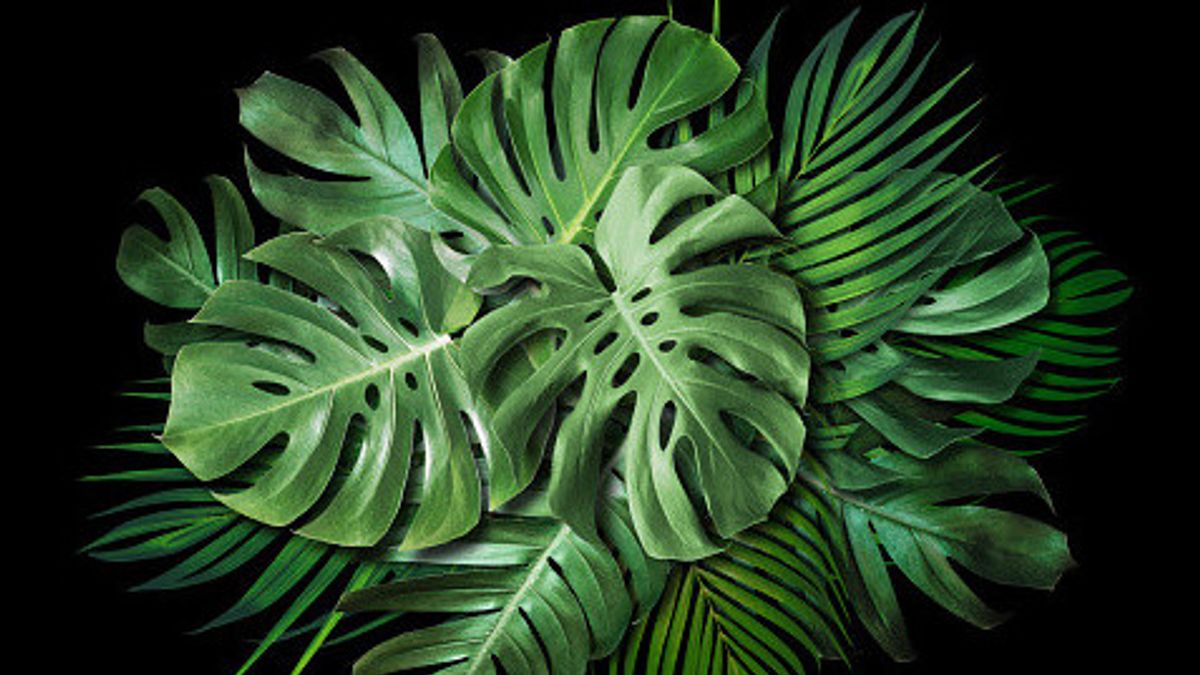JAKARTA – The beautiful green color of leaf plants is often disturbed by a number of factors that cause black spots to appear on the leaves. The cause may be a simple thing, but it could also be due to an invisible pest attack.
No need to worry if your ornamental leaf plants at home experience black spots. Generally, even though black spots appear on the leaf surface, it does not make the ornamental plant die. It's just that the growth is not optimal and its beauty is reduced.
1. Old plantLeaf spot is often experienced in ornamental plants with older leaves. Apart from being young, age problems also affect natural decline. Reported by the Garden Guide, Tuesday, December 21, the aging process of ornamental plants can be slowed down by providing special care.
For example by cleaning the leaves, rotating the plant so that all the leaves get enough light. These two ways can be done easily, besides keeping the planting medium moist, weeding, and routinely providing plant nutrients.
2. OverwateringActually the second factor that causes the appearance of black spots on leaf ornamental plants is a simple thing. Watering that is too tight causes overwatering, this not only risks causing a decrease in the beauty of the leaves. But also the roots rot so that the effect reaches the leaves and even the stems.
How to check that your ornamental plants are good, check the roots. When you find blackened and mushy roots, they are most likely rotting. To fix this, cut the rotten part and move it to another pot with a new planting medium.
3. Fungal infectionThe most common reason for dark spots is a fungal infection. Although not every plant is susceptible to fungal attack, 'leaf spot' indexi needs to be addressed as soon as possible. Usually, fungal pathogens like wet leaf conditions and are easily spread by droplets or splashes. Fungal infections also indicate that your plant is too moist and the water has been sitting on the leaves for too long.
This factor often occurs during the rainy season. So, during the rainy season, make sure the raindrops dry up immediately after the rain stops. Or you can move the plants so they are not exposed to rainwater.
An effective way to deal with this is to use fungicides. Often used by spraying on the leaves of ornamental plants. It can also be mixed with neem oil so that the spores do not spread to other plants.
At its simplest, mix a spoonful of baking soda, a gallon of water, horticultural oil, and insecticidal soap. The mixture can be sprayed on the leaves exposed to the fungus.
4. Bacterial and viral infectionsBlack spots on leaf ornamental plants can be a symptom of bacterial or viral disease. The black color is easily recognizable, which is a slightly brownish black or not as black as when infected with a fungus. When experiencing this factor, immediately keep exposed ornamental plants away from other plants so they are not contagious.
5. Pest attackPests that attack plants can leave black dots and damage plants. These attacking pests include aphids, spider mites, scale, and mealybugs. In some areas, thrips, gnats and root mites can also cause black spots on the leaves.
Pest control can use natural insecticides or a mixture of neem oil. Although it is rare that factors other than those mentioned above can also be the cause of black spots on leaf ornamental plants, including lack of nutrients, low humidity, cold temperatures, and poor water quality.
The English, Chinese, Japanese, Arabic, and French versions are automatically generated by the AI. So there may still be inaccuracies in translating, please always see Indonesian as our main language. (system supported by DigitalSiber.id)













